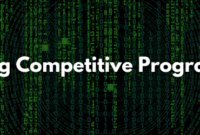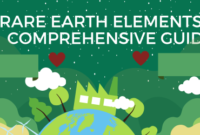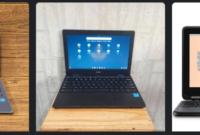Clean Up Your Drive – In today’s digital world, we store everything online — from work documents and personal notes to endless photos, videos, and emails.
Over time, these digital spaces can become cluttered and overwhelming. A messy digital life not only slows down your devices but also adds mental stress you may not even realize you’re carrying.
If your Google Drive is overflowing, your inbox is full of unread messages, and your photo gallery is cluttered with duplicates and screenshots, you’re not alone. The good news? Cleaning up your digital life doesn’t have to be stressful or time-consuming.
With a few simple routines, you can get organized, free up space, and maintain a sense of calm every time you open your laptop or phone.
In this article, we’ll explore practical steps and stress-free habits to clean up three key areas of your digital life — your drive, inbox, and photos — and keep them clutter-free for good.
Why Digital Decluttering Matters
Before we jump into the steps, let’s understand why digital decluttering is so important:
- Faster Performance: Too many files or emails can slow down your computer, phone, or cloud services. Cleaning up keeps things running smoothly.
- Mental Clarity: A cluttered digital space often mirrors a cluttered mind. Decluttering helps you focus and reduces decision fatigue.
- Saves Time: Finding files, photos, or emails becomes easier when everything is organized.
- Saves Money: Many cloud storage services charge for extra space. Keeping your storage tidy means you don’t have to pay for unnecessary upgrades.
- Improved Security: Old files, outdated emails, and duplicate photos might contain sensitive information. Regular cleanup helps reduce security risks.
Part 1: Cleaning Up Your Drive (Google Drive, OneDrive, or Dropbox)
Your digital drive is often the biggest source of clutter — thousands of files, unorganized folders, and forgotten downloads. Let’s fix that with simple, non-stressful routines.
1. Create a Folder Structure That Makes Sense
Start by thinking about how you naturally work. Then, create broad folders like:
- Work
- Personal
- Finance
- Photos
- Projects
- Archived
Inside each folder, you can make subfolders (e.g., “Invoices 2025” under “Finance”).
The key is to keep it simple and logical, so you can easily find what you need.
2. Use the 2-Minute Rule
If it takes less than two minutes to rename, delete, or move a file to the correct folder — do it right away.
This small habit prevents piles of “miscellaneous” files from building up.
3. Delete Obvious Junk First
Go through your drive and sort files by size or date. Delete what’s unnecessary:
- Old drafts or duplicate files
- Temporary project folders
- Unused PDFs or zip files
- Screenshots or images you no longer need
4. Use a Naming Convention
Adopt a clear naming system for your files, such as:
“YYYY-MM-DD_ProjectName_Version”
Example: 2025-10-17_BlogDraft_V1.docx
This keeps files in chronological order and makes searching effortless.
5. Set a Recurring “Digital Declutter Day”
Pick one day each month (like the first Sunday) for a 30-minute cleanup session.
During this time:
- Delete old or duplicate files
- Move documents into folders
- Empty the trash or recycle bin
Routine is key — short, regular sessions prevent chaos from building up again.
6. Use Storage Management Tools
Both Google Drive and Dropbox have tools that help you find large or old files.
- Google Drive: Use the “Storage” tab to sort by file size.
- OneDrive: Offers “Storage Sense” for auto-cleanup.
- Dropbox: Has a “Recents” tab and duplicate file detection.
7. Archive Instead of Deleting Everything
If you’re unsure about deleting certain files, move them to an “Archive” folder instead.
After 6 months, review the folder — if you haven’t needed any of the files, you can safely delete them.
read also:
– 7 Best Budget-Friendly Windows Laptop – Tech & Tips | Inspirabuilding
Part 2: Cleaning Up Your Inbox (Gmail, Outlook, or Yahoo)
A cluttered inbox is one of the most common causes of digital stress. The endless notifications, unread emails, and promotions can easily overwhelm anyone.
Here’s how to simplify your inbox without the headache.
1. Unsubscribe Ruthlessly
Open your inbox and look for emails you never read — newsletters, store promotions, or updates from old accounts.
Use tools like:
- Unroll.me
- Clean Email
- Gmail’s unsubscribe button
This instantly reduces incoming clutter and future stress.
2. Use Folders or Labels
Organize your inbox with folders (Outlook) or labels (Gmail):
- Work
- Personal
- Bills & Receipts
- Travel
- Family
When new emails arrive, you can quickly sort them — or better yet, automate sorting using rules and filters.
3. The 4D Rule for Email Management
Every time you open an email, do one of these:
- Do it — reply or take action immediately if it takes less than 2 minutes.
- Delegate it — forward it to someone responsible.
- Defer it — snooze or flag it for later.
- Delete it — if it’s irrelevant or spam.
This keeps your inbox under control without wasting time rereading the same messages.
4. Schedule Inbox Check Times
Instead of constantly checking emails throughout the day, set two or three specific times to process them — for example, morning, after lunch, and before finishing work.
This prevents distraction and lets you focus on important tasks.
5. Search and Delete in Bulk
Use the search bar to quickly find and delete groups of old emails:
- Search by sender (e.g., “from:[email protected]”)
- Search by file size (“larger:10MB”)
- Search by date (“before:2022/01/01”)
Bulk delete old messages — it’s fast, satisfying, and frees up space immediately.
6. Archive Instead of Deleting (When in Doubt)
Not ready to delete old emails? Archive them. Archiving removes them from your main inbox but keeps them searchable for later reference.
7. Create an “Inbox Zero Friday” Routine
Once a week, aim for “Inbox Zero Friday.”
Spend 15–20 minutes cleaning your inbox:
- Unsubscribe from new spam
- Reply to pending messages
- Archive or delete the rest
It’s a small habit that makes a big difference by the weekend.
Part 3: Cleaning Up Your Photos
Your photo library is one of the biggest digital clutter zones. Between selfies, memes, screenshots, and duplicates, it’s easy to lose the pictures that actually matter.
Let’s simplify your photo cleanup with gentle, stress-free methods.
1. Delete in Small Sessions
Instead of tackling thousands of photos at once, commit to deleting 50–100 photos a day while waiting in line, commuting, or relaxing.
Small sessions prevent burnout.
2. Start with the Easy Categories
Go for obvious clutter first:
- Screenshots
- Blurry photos
- Duplicates
- Random memes or forwarded images
You’ll clear up tons of space quickly without emotional decisions.
3. Use Automatic Cleanup Apps
If you use a smartphone, there are great apps to help:
- Google Photos: Identifies duplicates and blurry shots
- Gemini Photos (iOS): Finds similar and redundant photos
- Clean Master (Android): Detects large and unnecessary files
Let automation handle the heavy lifting.
4. Create Albums or Folders for Special Memories
Sort your photos into meaningful albums like:
- Family Trips
- Pets
- Friends
- Work Events
- Favorites
This makes browsing more enjoyable and helps you relive happy memories.
5. Backup Before Deleting
Before major cleanup, backup all your photos to a separate drive or cloud storage.
That way, you can delete freely knowing your memories are safe.
Recommended backup methods:
- External hard drive
- Google Photos (Cloud)
- Apple iCloud
- Amazon Photos
6. Practice the “One Photo Rule”
If you took 10 versions of the same shot, keep only the best one.
This reduces redundancy while keeping your memories intact.
7. Schedule a Monthly “Photo Review Day”
Once a month, spend 15–30 minutes reviewing your latest photos.
Delete duplicates, add captions, and organize new albums.
Consistency turns cleanup into a relaxing habit instead of a massive project.
Part 4: Maintaining a Stress-Free Digital Life
Cleaning up once is great — but maintaining order is even more powerful. Here’s how to keep your digital world clutter-free effortlessly.
1. Adopt the “One In, One Out” Rule
Every time you upload or save a new file or photo, delete one old one.
It’s a simple habit that prevents digital bloat.
2. Automate Where Possible
- Set up email filters to sort incoming mail automatically.
- Use auto-backups for important documents and photos.
- Turn on auto-delete for trash folders every 30 days.
Automation keeps your system tidy without constant attention.
3. Review Your Subscriptions and Apps
Every few months, review what apps or cloud services you use.
Cancel subscriptions you no longer need and uninstall unused apps to save both money and storage.
4. Simplify Your Desktop and Home Screen
Your desktop should only have shortcuts you actually use.
Move everything else into a folder called “Desktop Archive” or delete them altogether.
For phones, group apps by category (e.g., “Work,” “Social,” “Finance”) and remove duplicates.
5. Create a Digital Routine Checklist
Here’s a sample monthly checklist:
- 🗂️ Organize Drive folders
- 🧹 Delete large or old files
- 📧 Clear email inbox
- 📸 Review and clean photo library
- 🔒 Backup important data
- ⚙️ Empty trash and recycle bins
Doing this once a month keeps your digital world light and efficient.
6. Reward Yourself After Each Cleanup
Decluttering can be emotionally and mentally tiring. Reward yourself afterward — grab a coffee, take a walk, or watch your favorite show.
Celebrating progress keeps you motivated to continue.
Part 5: Mindful Benefits of a Digital Cleanup
Beyond space-saving and organization, digital decluttering offers real emotional and psychological benefits.
- Less Anxiety: You no longer dread opening your inbox or drive.
- Better Focus: You can find things quickly without distractions.
- More Creativity: A clean digital environment boosts mental clarity.
- Sense of Control: You feel more in charge of your digital and personal life.
- Improved Work Productivity: Clean files mean smoother workflows and less wasted time.
Digital cleanliness is not just about organization — it’s about mental peace in a world filled with constant notifications and noise.
Final Thoughts: Make It a Lifestyle, Not a Chore
Cleaning up your digital world doesn’t have to be an exhausting, one-time event. Instead, treat it as a routine of mindfulness and maintenance — just like brushing your teeth or tidying your desk.
By setting aside small, regular moments to clear your drive, inbox, and photos, you’ll not only save time and space but also protect your peace of mind.
Remember:
- Start small.
- Stay consistent.
- Celebrate progress, not perfection.
The goal isn’t to have a perfectly empty inbox or folder — it’s to build a healthy, stress-free relationship with your digital world.






